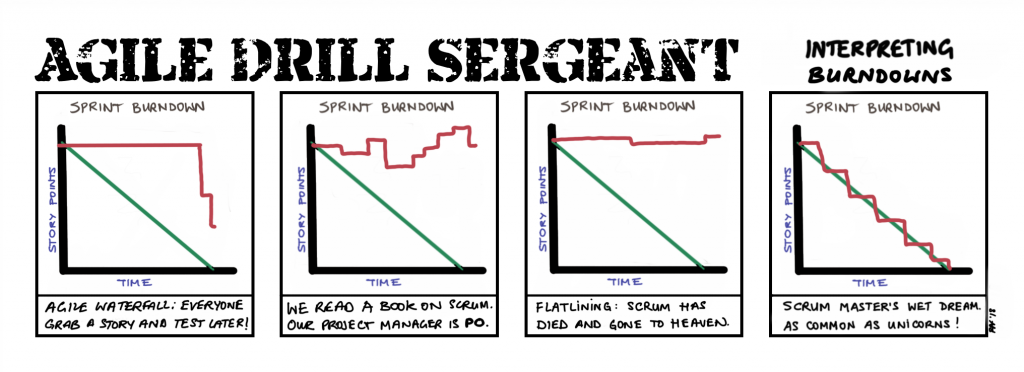Jira is one of those contentious issues in the agile world. As with many technologies, the bad rap often comes from misuse rather than the technology being intrinsically evil. I have often heard how awful Scrum is, only to find out that the aforementioned Scrum had only the a passing resemblance to actual Scrum. So too is it with Jira. If you let everything become a slave to what Jira allows or doesn’t allow, then, yes, Jira is obviously to blame 😉
Over time I’ve found Jira to become a very supportive technology – whether we’re doing Scrum or Kanban. It keeps management happy that “everything” is being permanently documented (which in some industries is a necessity). Yes, teams often complain about having to keep a physical board and an electronic board in sync – though the overhead here really is minimal and I have no patience for that argument anymore.
Jira done right can provide some really useful metrics 😉 Obviously, this only works if the team members make the effort to keep it up-to-date – because if they don’t, the metrics are basically a lie. So given a suitable workflow, a team that keeps stories and tasks up-to-date, Jira can provide sprint burndowns, release burndowns, velocity charts, and many more charts. One that I use alot, is called the version control chart and it shows “the cone of uncertainty” – i.e. given the current release backlog and the current velocity, what are the probable best and worse case dates for delivering the desired backlog items. I have often used this quite successfully with Product Owners to get them to reduce scope, when they have a fixed launch date.
This cartoon is based on some of the sprint burndowns I’ve seen in Jira. So, yeah, as a support technology, I’m a Jira fan!
